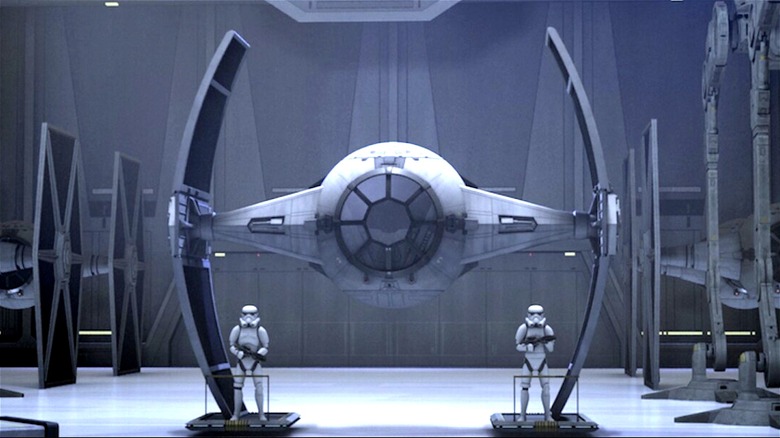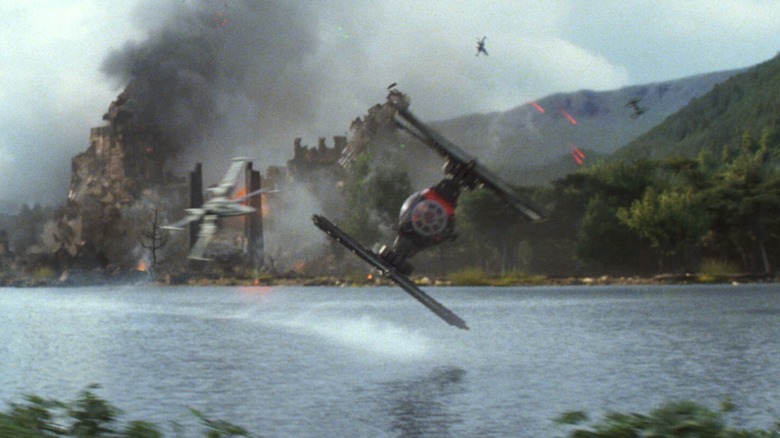Star Wars: What Does The 'TIE' In TIE Fighters Stand For?
From the moment it began its reign of dominance over the pop culture landscape, "Star Wars" has provided fans with loads of fascinating other-worldly elements. Alongside the ever-iconic lightsaber, countless aliens, and varied planets are numerous ships used to traverse the Star Wars galaxy. Among those that debuted in the original 1977 feature film, the Imperial TIE fighter is one of the most iconic. With its circular cockpit, large, flat wings, and signature engine roar, it's an unforgettable spacecraft. In contrast, the meaning behind the ship's "TIE" designation is far less known.
While one might imagine the name comes from the fact that TIE fighters are shaped similarly to bow ties, "TIE" is actually an acronym. It stands for Twin Ion Engine, a reference to the two Sienar Fleet Systems P-s4 twin ion engines that propel these ships. Suffice it to say, putting so much importance on the TIE fighter's engines is warranted. They give these ships tremendous maneuverability and speed, which makes them formidable weapons during dogfights, especially if one is forced to face multiple ships at one time. They're not considered the backbone of the Imperial Navy for nothing.
In fact, they prove to be so effective that they don't disappear once the Empire crumbles — they evolve.
Twin Ion Engine fighters serve multiple galactic factions
Throughout the reign of the Empire, TIE fighters have been seen being used in a variety of settings. They destroy insurgents in the air and on land, serve as escort ships, and observe from above. As time goes on, variants arise in the TIE fighter series, each bringing something new to the table. There's the TIE bomber that, as the name implies, bombs targets below; the TIE interceptor, which takes the maneuverability and speed of the standard TIE fighter to a new level; and the quicker and even more fortified TIE defender, to name a few.
Aware of the TIE series' versatility, the Empire's successors elect to expand on the design. From the ashes of the Empire comes the First Order, another fascistic regime with stormtroopers, dark side users at the helm, and, of course, plenty of TIE fighters. Alongside the standard First Order TIE model is the Special Forces TIE fighter. It seats two pilots instead of one, boasts deflector shields, and can jump to hyperspace. The First Order also has the TIE assault shuttle, as well as improved versions of the TIE bomber and interceptor. Emperor Palpatine's (Ian McDiarmid) Sith Eternal also employs TIE daggers, which include technological tweaks and appear similar to TIE interceptors with their triangular wings.
Despite all of the changes to wing shape, weaponry, shielding, and more, the twin ion engines remain at the core of all iterations of the iconic spaceships. After all, without them, they simply wouldn't be TIE fighters.

